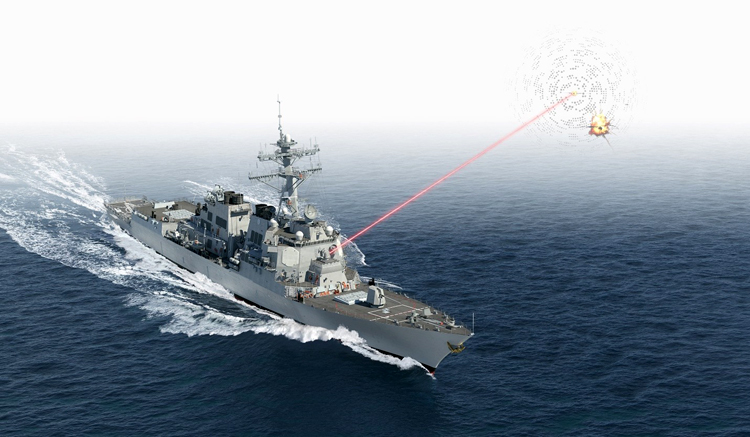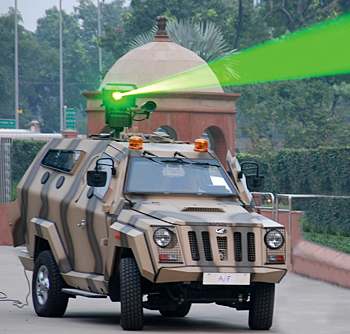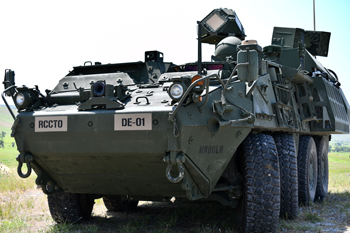INDIAN ARMED FORCES CHIEFS ON OUR RELENTLESS AND FOCUSED PUBLISHING EFFORTS

The insightful articles, inspiring narrations and analytical perspectives presented by the Editorial Team, establish an alluring connect with the reader. My compliments and best wishes to SP Guide Publications.

"Over the past 60 years, the growth of SP Guide Publications has mirrored the rising stature of Indian Navy. Its well-researched and informative magazines on Defence and Aerospace sector have served to shape an educated opinion of our military personnel, policy makers and the public alike. I wish SP's Publication team continued success, fair winds and following seas in all future endeavour!"

Since, its inception in 1964, SP Guide Publications has consistently demonstrated commitment to high-quality journalism in the aerospace and defence sectors, earning a well-deserved reputation as Asia's largest media house in this domain. I wish SP Guide Publications continued success in its pursuit of excellence.
Indigenous Laser Weapon System
Directed Energy Weapons are redefining military strategies worldwide
 |
The Author is Former Director General of Information Systems and A Special Forces Veteran, Indian Army |

A Laser Weapon System is a type of Directed Energy Weapon (DEW) that uses a laser to attack a target. DEWs, on the other hand, also use microwaves, particle beams, and sound beams; their potential applications being weapons that target personnel, missiles, drones, satellites, vehicles and optical devices. Interestingly, the 'Havana Syndrome', which affected some Americans, is a set of medical symptoms suspected to be caused by microwave energy. The US accuses Russia for the Havana Syndrome.
China, France, Germany, India, Iran, Israel, Pakistan, Russia, and the UK are all known to be developing DEWs. Turkey claimed to have used its ALKA DEW against Libya in August 2019. Both Iran and Turkey claim to have DEWs in active service, while Israel has also been using laser weapons.
The US has been developing laser weapon systems over the past several years. Some of America's major laser weapon projects include the Middle Infrared Advanced Chemical Laser (MIRACL) that uses cutting edge mid-infrared chemical lasers, the Tactical High Energy Laser (THEL), the Space-Based Laser (SBL) that uses hydrogen fluoride as the laser source, and the Airborne Laser (ABL).
The US Navy installed a 60-kilowatt laser weapon on the destroyer USS 'Preble' in August 2022, indicating advancements in laser weapon deployment
A Chinese view is that most of the above American laser weapon systems are still in experimental stage or abandoned because of their bulk. However, recent media reports indicate that the US had already deployed a ship-based high-energy laser to defend against small and fast-moving ocean surface weapons, as well as missiles and drones; the US Navy installed a 60-klilowatt laser weapon on the destroyer – the USS 'Preble' in August 2022.
The general idea of laser-beam weaponry is to hit with a train of brief pulses of light. The power needed to project a high-powered laser beam of this kind is beyond the limit of current mobile power technology, thus favoring chemically powered gas dynamic lasers. These weapons have the potential to undermine the adversary's navigation, surveillance, and communication systems, giving their user a tactical edge in space-based warfare.

Due to their ability to engage targets at the speed of light, laser weapon systems are extremely effective against moving targets. They are also likely to be more affordable compared to conventional missile-based weapon systems owing to their rapid recharge time and no requirement of expensive ammunition. Israel's 'Iron Beam' anti-missile laser system costs about $3 per shot compared with upwards of $40,000 for each Tamir missile fired as part of the country's 'Iron Dome' air defence system. In January 2024, Britain successfully test fired its 'DragonFire' laser weapon system that can shoot down enemy aircraft and missiles at a per-shot cost of less than £10, or 1,056.
Laser weapon systems have the potential to undermine adversaries' navigation, surveillance, and communication systems, providing a tactical edge in space-based warfare
Media reports of August 14, 2023 reported that Chinese scientist from the National University of Defence Technology in Changsha announced a breakthrough in laser weapon technology; claiming they have found a cooling mechanism for laser weapons which will stop heat accumulation, allowing the weapons to produce laser beams for as long as needed without performance reduction.

This mechanism implies weapons firing high-energy laser beams infinitely; high quality beams can be produced not only in the first second, but are also maintained indefinitely. Deploying such innovative structures and gas flows, the new development minimises turbulence and enhances mirror cleanliness. This development has the ability to fundamentally alter the nature of combat by lengthening the engagement time, enhancing range and damage to the target, as well as decreasing the costs and logistics. There is speculation in the west that China could use these laser systems against satellites, including the StarLink satellites of SpaceX.

It was covered in these columns in 2023 that the 'Technology Perspective & Capability Roadmap' of the Ministry of defence (MoD) had identified DEWs and anti-satellite (ASAT) weapons as thrust areas over next 15 years. Also, that the Laser Science and Tech Centre (LASTEC) of the Defence Research and Development Organisation (DRDO) was developing: the kilo ampere linear injector (KALI) linear electron accelerator, eventually to be progressed into a high-powered microwave weapon; a laser dazzler that impairs vision temporarily to control unruly crowds, and; 'Aditya', a vehicle-mounted 25-kilowatt gas dynamic laser-based DEW system (as technology demonstrator) to hit a missile in terminal phase at a distance of 5-7 km. The next step was to create solid state lasers which are very portable and can be fitted on various platforms.
Laser weapon systems are extremely effective against moving targets due to their ability to engage targets at the speed of light

The latest news is that the DRDO is likely to test its laser weapon, the Directionally Unrestricted Ray Gun Array 'DURGA-2' in the near future. DURGA-2 is to have the capability of destroying any ballistic or cruise missile launched by China or Pakistan. The laser weapon can also annihilate the enemy civilian or military radar and electronic warfare systems, which will cripple ender all enemy missile establishments.
The DURGA-2 project is being developed at a cost of $100 million and is planned to be integrated with land, sea and air based platforms. In 2017, the DRDO had tested a truck-mounted 1 kilowatt laser system, which was able to hit a target at a distance of 250 metre. Now the DRDO has reportedly succeeded in developing a 25KW laser that can target a ballistic missile during its terminal phase at a maximum distance of 5 km. Scientists are working to enhance this range to 100 km or beyond. The biggest challenge is to provide adequate power to the system for the high power laser weapons.
China announced a breakthrough in laser weapon technology, claiming they have found a cooling mechanism allowing laser weapons to produce beams indefinitely without performance reduction, potentially altering the nature of combat

The latest to join the laser weapon race is Taiwan, with the new that the country's state-owned arms developer the National Chung-Shan Institute of Science and Technology (NCSIST) is nearing the testing stage of its vehicle-mounted high-energy laser weapon (code-named 'Lightening Protection Project) in cooperation with a foreign friend – obviously the US.
The offensive output of Taiwan's 50-kilowatt laser gun would reportedly be comparable to the DE M-SHORAD prototypes mounted on Stryker armored vehicles that the US Army recently sent to the Middle East to test how they operate in harsh conditions like sandstorms. Also, the NCSIST has reportedly been awarded the contract to develop unscrewed surface vessels (USV) that could be packed with explosives and deployed en masse against China invading forces.
Finally, India must pull out all stops towards indigenous development of DEWs including laser weapon systems considering China's aggressive stance and the US-led West seeking new regions for warmongering, including in the Indian Ocean Region (IOR).





